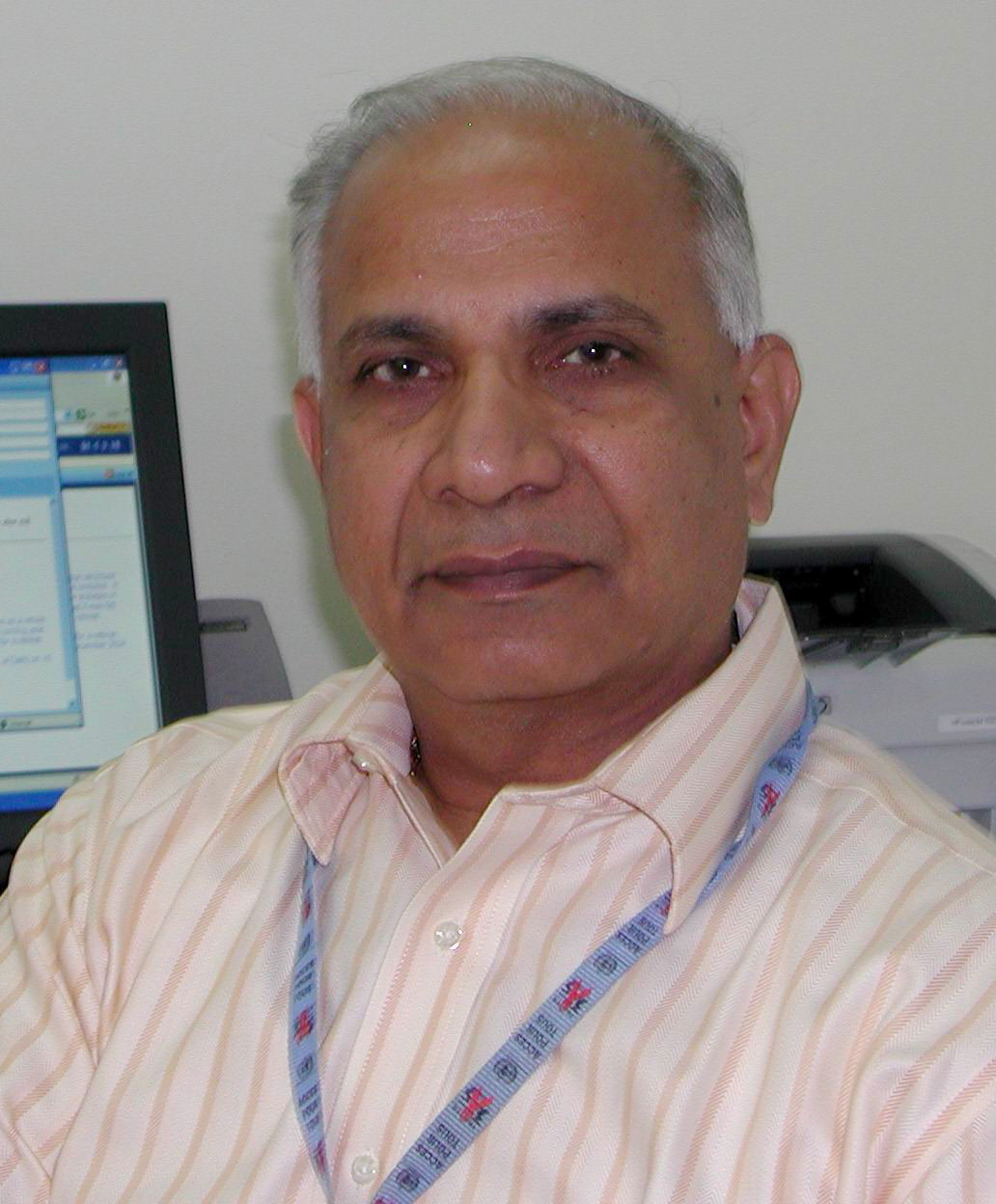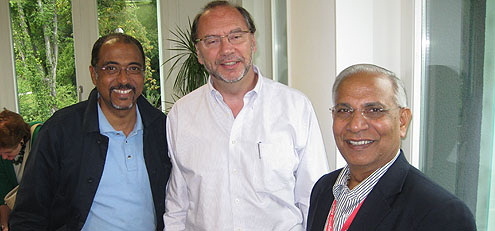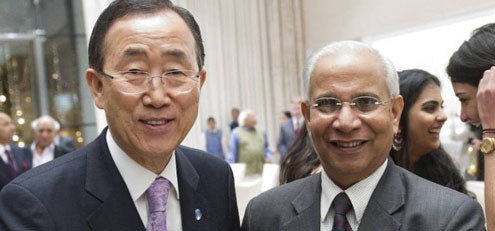J.V.R. Prasada Rao was appointed UN Secretary-General’s Special Envoy for AIDS in Asia and the Pacific in May 2012. Formerly director of India’s National AIDS Control Organization and secretary for Health and Family Welfare, he has been a leader in India’s response to AIDS for 15 years. The TREAT Asia Report first spoke to Mr. Rao in 2007 when he was director of the UNAIDS Regional Support Team for AIDS in Asia and the Pacific. In this interview, he discusses the progress made over the past five years and the challenges that remain.
TREAT Asia Report: In May you were appointed as the UN Secretary-General’s Special Envoy for AIDS in Asia and the Pacific. What do you hope to achieve in this position? UN Special Envoy for AIDS in the Asia-Pacific J.V.R. Prasada Rao
UN Special Envoy for AIDS in the Asia-Pacific J.V.R. Prasada Rao
J.V.R. Prasada Rao: We need to begin by achieving an AIDS-free ‘next generation,’ which essentially means eliminating new HIV infections among newborn babies by 2015. The second step, which is more difficult to achieve but definitely feasible, is to also eliminate new infections among young adults.
Treatment as prevention, new technologies for prevention, and improvement of the legal environment for HIV-positive people and other vulnerable populations are three of the pillars for bringing this to fruition. The fourth pillar is a vaccine or a cure, which will really change the rules of the game.
TA Report: As a region, Asia has lower rates of antiretroviral coverage to prevent mother-to-child HIV transmission (PMTCT) than Sub-Saharan Africa. What is being done to improve coverage?
Rao: This is one of the failures of the AIDS program in this region. In India, the national program has to accelerate its efforts toward better coverage of pregnant mothers with PMTCT services, and should take advantage of the presence of a large National Rural Health Mission (NRHM) functioning in the country. The National AIDS Control Organization (NACO) and NRHM have to coordinate better to integrate PMTCT services with general health systems in a phased manner.
India and other Asian countries should also switch immediately to the multidrug regimen advocated by WHO and discontinue single-drug treatment with nevirapine without further delay. UNAIDS launched an intensified global plan along with WHO to eliminate new infections among children by 2015, and India is the only country from Asia in that list. Hopefully this will help India to do better in coming years.
 |
| Left to right: UNAIDS Executive Director Michel Sidibé, his predecessor Dr. Peter Piot (now director of the London School of Hygiene & Tropical Medicine), and J.V.R. Prasada Rao
|
TA Report: When we spoke with you in 2007, prevention programs in Asia were struggling to reach 80 percent of target populations—injecting drug users (IDUs), men who have sex with men (MSM), and sex workers. What progress has been made over the past five years.
Rao: There has been impressive progress in prevention programs for sex workers and their clients in many countries in Asia. Coverage levels reached 60 to 70 percent in countries like India, Nepal, and Bangladesh in South Asia and Thailand, Cambodia, and Laos in Southeast Asia. As a result, new infections among these populations started steadily declining.
However, the situation has not altered materially for IDUs and MSM in many Asian countries. There has been impressive scale-up of opioid substitution therapy (OST) for heroin users and needle and syringe programs (NSPs) in China, Vietnam, Malaysia, and Indonesia, which have large IDU populations. But this scale-up has not been matched by the creation of a more friendly and humane legal environment surrounding drug use. Laws governing drug use and same-sex relations continue to be harsh.
Asian countries with concentrated epidemics aiming to achieve the MDG (Millennium Development Goals) target of reducing new infections by half must intensify their efforts to reach out to vulnerable populations and create a friendly legal environment to create better access to services.
TA Report: The last time we spoke, you said that political will and resources were the two key components to scaling up prevention coverage. How has this changed over the last five years?
Rao: These two continue to be key components, and even more so now. The diminishing availability of resources from traditional donors is a matter of serious concern that countries should take notice of. Political will to commit even more domestic resources to AIDS programs will be an important determinant in the success of the AIDS response in many countries, including emerging economies like China and India. In addition, we need to emphasize the need for legal reforms by way of repeal or amendment of laws criminalizing vulnerable populations and people living with HIV. These laws are a major impediment to getting prevention and treatment services to people in need of them.
TA Report: In 2009 India decriminalized homosexuality. What impact has this had on treatment and prevention programs targeting MSM in India?
Rao: Since the pronouncement of the judgment decriminalizing homosexuality, there has been a marked increase of coverage of prevention and treatment programs for MSM and transgender individuals. These groups could organize themselves as communities much more effectively to avail services under the national program. I do hope that the next phase of the national AIDS control program (NACP IV) will prioritize preventive interventions among MSM and transgender communities in India.
TA Report: The rate of new HIV infections in India decreased by more than 50 percent between 2000 and 2009. What factors have contributed to this decrease?
Rao: India recognized the need to build an evidence-based program for AIDS prevention right from 1992, when the first phase of the national program was launched. The evidence clearly showed where the infections were occurring—among sex workers and their clients, injecting drug users, MSM, and transgender youth. Prevention interventions with a comprehensive package of services received priority right from 1999 when the second phase of the national program was launched.
A national surveillance system was made operational, and it monitors the epidemic so that we can carry out midcourse corrections wherever needed. The treatment program for adults and children that started in 2003 was scaled up substantially to reach about 50 percent of targeted populations.
Overall there has been tremendous political support and excellent leadership for the program in the last 20 years. The cumulative effect of all of this is the reduction of new infections to 56 percent of the 2001 level, which sets India on course to achieve the MDG 6A target—to halt and begin to reverse the spread of HIV/AIDS by 2015.
TA Report: What strategies to reduce the cost of second-line therapies have been successfully implemented? Are there other steps that countries can take using current or proposed intellectual property flexibilities?
 |
| J.V.R. Prasada Rao with UN Secretary-General Ban Ki-moon in Mumbai, India |
Rao: India, which produces and supplies the bulk of the generic drugs for developing countries in Asia and Africa, has been successful in bringing a number of second-line drugs into production, enabling countries to import them at a lower cost than the proprietary drugs from multinationals. The real challenge is for third-line drugs, which are mostly under patents. If countries do not use the flexibilities provided under the TRIPS Agreement boldly by resorting to compulsory licensing or parallel importing of third-line ARV drugs, they will face a serious crisis in scaling up treatment programs in the next few years. India should take the lead in bringing some of the third-line ARVs under compulsory licensing, taking advantage of its patent law, which is one of the best in the world.
TA Report: The UNAIDS Getting to Zero campaign sets ambitious goals for 2015. How hopeful are you about achieving these goals?
Rao: The goals set under the UNAIDS Getting to Zero campaign are critical for creating an AIDS-free generation. Unless ambitious targets are kept, generating political will for commitment of resources, both domestic and external, becomes difficult.
Preventing new infections among children is very much an achievable target for 2015. So is prevention of deaths due to HIV/AIDS, if treatment programs the world over get increased resources to cover another 8 to 10 million people. The challenging part is the third zero, to eliminate stigma and discrimination. Achieving this will require a long and sustained fight by civil society groups and multilateral agencies.
But I am optimistic about the future and my work will be directed toward motivating country leadership to develop the vision of moving towards an AIDS-free generation in the Asia- Pacific region.